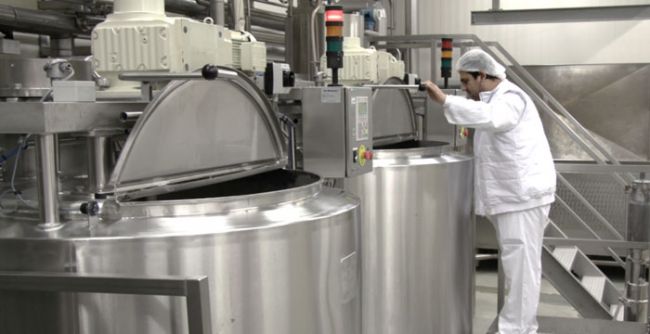Chronic toothaches are more than just a nuisance; they can significantly impact your daily life, making even the simplest tasks seem unbearable. Whether you’ve experienced the throbbing pain from a deep cavity, an infected tooth, or a wisdom tooth that’s causing havoc, a chronic toothache can leave you seeking relief at any cost. While many people delay visiting the dentist, hoping the pain will go away on its own, one of the most effective solutions may be choosing tooth extraction early.
Tooth extraction might sound like a drastic measure, but for many people dealing with persistent tooth pain, it’s the fastest and most reliable way to stop the suffering. In this article, we’ll dive into why early tooth extraction is an important step to consider for chronic toothaches, how the procedure can bring immediate relief, and how to manage both the extraction process and recovery. We’ll also discuss how to recognize when it’s time to make the decision to have a tooth removed.
Understanding Chronic Toothaches: The Unseen Battle
Chronic toothaches are often the result of underlying dental issues that have been left untreated or have progressed to a point where they cause ongoing pain. This pain doesn’t usually come from a single issue but from multiple potential causes. It might be a combination of infection, inflammation, or even damage to the tooth and its surrounding structures.
The Causes of Chronic Toothaches

- Tooth Decay: Tooth decay is one of the most common causes of persistent tooth pain. When a cavity forms and goes untreated, it can reach the deeper layers of the tooth, eventually affecting the pulp, where nerves and blood vessels are located. This can cause severe pain, particularly when chewing or eating hot or cold foods.
- Tooth Infection (Abscess): An infection at the root of the tooth can cause intense, throbbing pain. This infection can spread to other parts of the mouth or even into the jawbone, making it critical to address quickly. If an abscess forms and isn’t treated, it can lead to further complications, such as the loss of the tooth or the infection spreading to other areas of the body.
- Gum Disease: Gum disease (periodontitis) affects the gums and the bone that supports your teeth. If left untreated, it can lead to tooth loss and chronic pain. Swollen, bleeding gums and a loose tooth are common symptoms of this condition.
- Impacted Teeth: Teeth that are unable to fully emerge from the gums, such as wisdom teeth, can cause persistent discomfort. Impacted teeth can become infected or inflamed, leading to severe pain that doesn’t subside without intervention.
- Tooth Sensitivity: Though less severe than other causes, tooth sensitivity can be a chronic issue for some individuals. Sensitivity to hot, cold, or sweet foods often results from worn enamel or gum recession. While not always as painful as an abscess, it can become an ongoing source of discomfort.
Why Waiting Makes Chronic Toothaches Worse
The longer a dental issue persists, the more difficult it becomes to treat. When you delay treatment for a toothache, you risk the following:
- Increased Pain: What might have started as a mild toothache can quickly escalate into a much more severe, throbbing pain that won’t go away with over-the-counter medications.
- Infections: Ignoring an infected tooth or gum disease can lead to abscesses, which can cause further complications. Untreated infections can spread to other areas, including the jaw and sinuses, leading to more serious health risks.
- Tooth Loss: Waiting too long to treat a problem can result in irreversible damage to the tooth or surrounding structures, sometimes making tooth extraction the only viable option.
- Higher Costs: Delaying treatment often means more intensive procedures down the line. The longer you wait, the more expensive it can become to save the tooth, particularly if you need a root canal or a crown.
Why Choose Tooth Extraction Early?
When dealing with chronic toothaches caused by severe tooth decay, infection, or gum disease, early tooth extraction can be an effective solution. At Nuffield Dental, we believe that addressing a problematic tooth sooner rather than later can offer real relief — helping you avoid prolonged pain and prevent further complications.
1. Immediate Pain Relief
The most obvious benefit of tooth extraction is immediate pain relief. Once the tooth is removed, the source of the pain is eliminated, providing you with fast and lasting comfort. Whether the pain was caused by an abscess or deep decay, removal of the tooth ensures that the discomfort will not return.
2. Prevention of Further Damage
Removing a tooth that is beyond repair helps prevent the spread of infection. Infected teeth, particularly those with abscesses, can cause serious damage to the surrounding tissue and bone. By extracting the tooth, you are preventing the infection from worsening and spreading to other parts of your mouth or even your body.
3. Improved Oral Health
In some cases, leaving a damaged tooth in place can affect the health of surrounding teeth and gums. For example, an infected tooth can cause gum disease to progress. By choosing to remove the problematic tooth, you stop the issue from affecting your overall oral health, allowing your gums and remaining teeth to heal and thrive.
4. Simpler and Less Expensive than Other Options
In many cases, a tooth extraction is more cost-effective than other treatments, such as root canals or crowns, especially when the tooth is severely damaged. Root canals may save a tooth, but they can be expensive and often require multiple visits to the dentist. For many patients, tooth extraction is the more straightforward solution.
How to Know When It's Time for Tooth Extraction
Knowing when to choose tooth extraction over other dental treatments can be a difficult decision. If you’ve been struggling with a chronic toothache, here are a few signs that it might be time to consider extraction:
1. Severe or Constant Pain
If your toothache persists despite over-the-counter painkillers or continues for days or weeks without improving, it could be a sign that the tooth is beyond repair. Chronic, throbbing pain that interferes with your daily activities should not be ignored.
2. Signs of Infection
If your toothache is accompanied by swelling, fever, or a bad taste in your mouth, you might be dealing with an infection. An infected tooth can become an emergency if left untreated, and extraction may be the quickest way to prevent the infection from spreading.
3. Loose or Shifting Teeth
If your tooth has become loose due to gum disease or trauma, extraction might be necessary. A loose tooth can make it difficult to eat, speak, and maintain proper oral hygiene, not to mention the pain it may cause.
4. Failed Treatments
If you’ve already tried treatments like root canals or fillings, and the pain persists or returns, it might be an indication that the tooth can no longer be saved. When a tooth is too damaged for repair, extraction is often the best option.
What to Expect During and After a Tooth Extraction
While tooth extraction may sound intimidating, it is a routine procedure performed by dentists and oral surgeons regularly. Understanding the process and what to expect can help alleviate anxiety.
The Procedure
The extraction procedure itself typically involves numbing the area with a local anesthetic, so you won’t feel any pain during the procedure. If you are anxious, your dentist may offer sedation options to help you relax. Once the tooth is extracted, the area is cleaned, and, if necessary, stitches may be placed to promote healing.
Aftercare
After the extraction, you may experience some discomfort, swelling, or bruising. Pain can be managed with prescribed or over-the-counter pain medications. It’s important to follow your dentist’s aftercare instructions carefully to promote healing and avoid complications. This may include avoiding hard foods, drinking through a straw, or smoking.
Recovery
Most people recover from tooth extraction within a few days, though it may take up to two weeks for the area to fully heal. During this time, you’ll need to maintain good oral hygiene and monitor the extraction site for any signs of infection.
Conclusion: Make the Right Choice for Your Health
Choosing tooth extraction early can save you from the agony of chronic toothaches and other dental complications. While it’s natural to feel apprehensive about losing a tooth, early extraction often provides the quickest and most effective relief, allowing you to focus on healing and improving your oral health. By recognizing the signs that indicate extraction is necessary and seeking professional advice, you can make an informed decision that will benefit your long-term health and well-being.
Frequently Asked Questions About Tooth Extraction
Will Tooth Extraction Hurt?
During the procedure, you will not feel pain due to local anesthesia. Afterward, you may experience some discomfort, but this can usually be controlled with pain medications.
How Long Does Recovery Take?
Recovery typically takes a few days to a week, although complete healing of the extraction site may take a couple of weeks.
Can I Eat After the Extraction?
You should stick to soft foods for the first few days after the extraction and avoid chewing near the extraction site. Avoid hot foods and drinks as well.
How Can I Prevent Infection After a Tooth Extraction?
Following your dentist’s aftercare instructions is crucial for preventing infection. This includes avoiding smoking, drinking through a straw, and keeping the extraction site clean.
Post Comment
Be the first to post comment!




